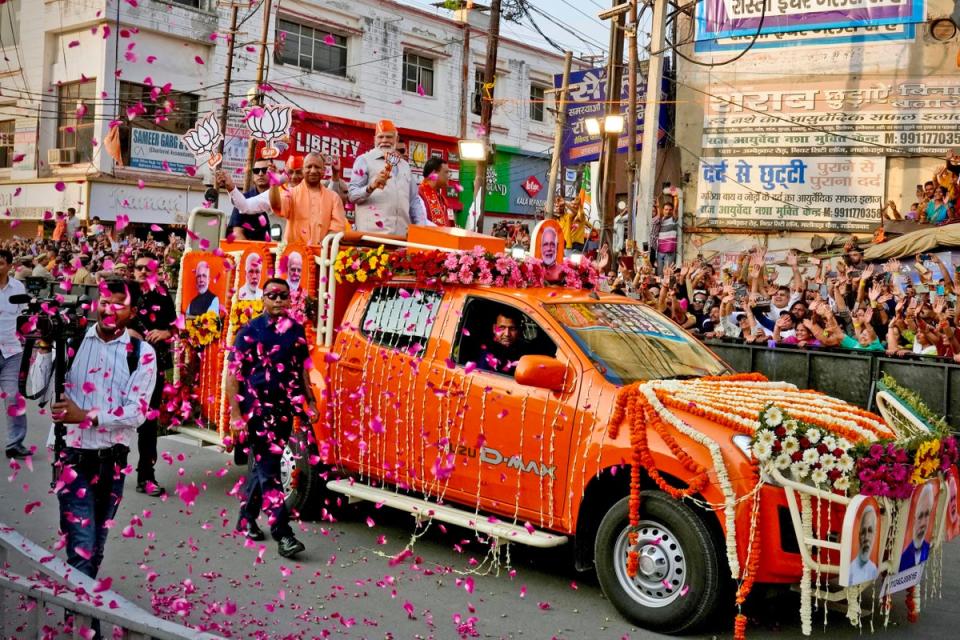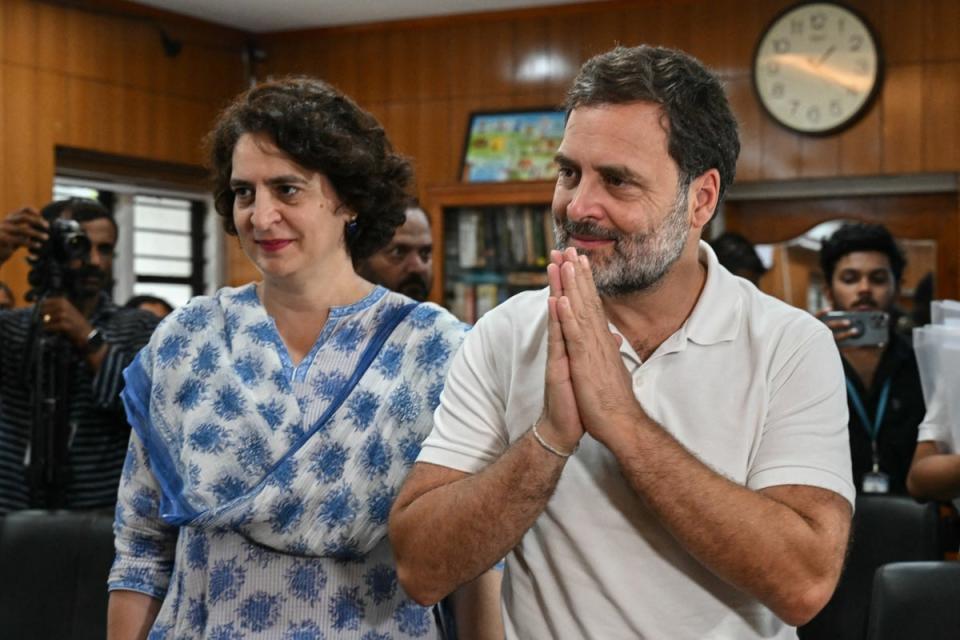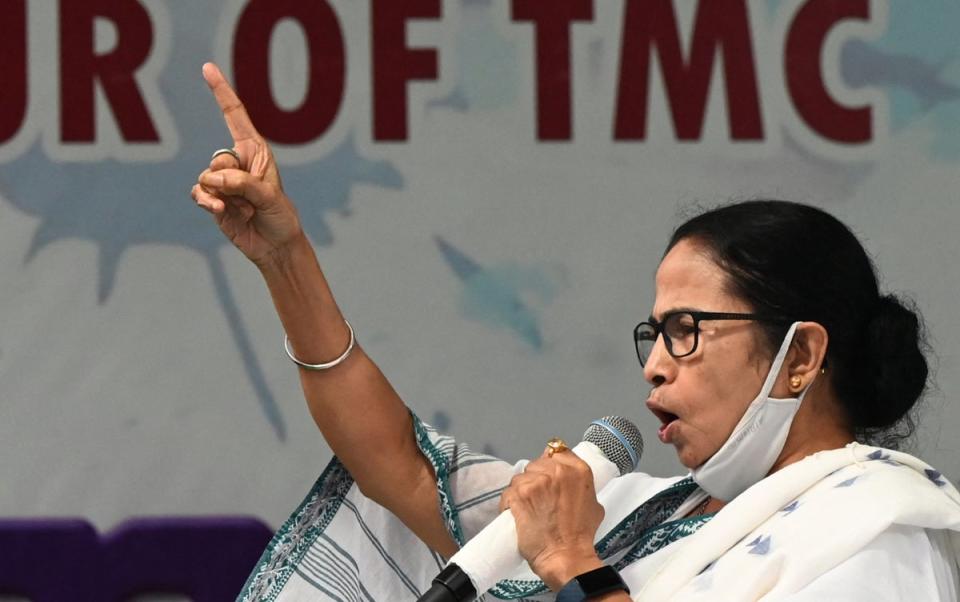Everything you need to know about India’s 2024 general elections as Modi seeks third term

- Oops!Something went wrong.Please try again later.
- Oops!Something went wrong.Please try again later.
Nearly a billion Indians will cast their votes over six weeks starting 19 April in the world’s biggest election to select a prime minister and members of parliament. The second phase of the Lok Sabha elections begins today.
Registered Indians will queue in lines to cast their votes in seven phases till 1 June braving the punishing summer heat.
The 44-day-long electoral process, the second longest in independent India’s history, will conclude with the counting of the votes on 4 June.
Incumbent prime minister Narendra Modi is seeking a straight third term in office and faces little to no challenge from an alliance of opposition parties led by the Indian National Congress.
Pre-poll surveys show the ruling Hindu nationalist Bharatiya Janata Party (BJP) and its allies should comfortably secure victory and hold onto power for the next five years.
Almost 970 million Indians – 471 million of them women – will cast their ballots to elect 543 members of the Lok Sabha or the more powerful lower house of parliament.
The 2024 general elections are to be largely fought on the issues of unemployment, the country’s economic performance over the past decade, farmers, a controversial citizenship law, and the right-wing government’s push for a Hindu-first nation.
The ruling and opposition parties have included climate crisis, development and economic growth among other proposed contentious laws in their election manifestos.
Critics of the Modi administration have raised concerns about his re-election to power amid reports of rising targeted hate incidents against Muslims and other minorities in the country.
The opposition parties have accused Mr Modi of weaponising federal agencies to target his political rivals through raids, graft charges and arrests, just weeks ahead of the elections.
When is India’s election?
Indians across 28 states and eight federal territories will vote in seven phases. The first phase of polling is to take place on 19 April, the second on 26 April; third, fourth, fifth and sixth on 7, 13, 20, 25 May; and the final phase will be held on 1 June.
Every phase of the election will span a single day, during which numerous constituencies – encompassing a variety of states, bustling urban centres, and remote villages – will cast their ballots.
More than 2,400 political parties are expected to put up candidates for the general elections, 10 of which hold 86 per cent of all seats in the lower house of parliament.

A party or a coalition needs a simple majority of 272 seats in the lower house of parliament. Mr Modi’s BJP won 303 seats the last time, followed by 52 for the main opposition Indian National Congress.
There are 131 seats reserved for MPs from “scheduled castes” and “scheduled tribes” for groups officially recognised as disadvantaged.
Organising the general election in India has been a Herculean challenge, mostly due to the vast terrain that stretches from the Himalayas in the north to the desert in the west and the coastal regions in the south.
The Election Commission of India, which oversees the polling, has to make sure there is a voting booth available within 2km of every voter. The poll body has already roped in 15 million government employees, many of them teachers and junior workers, who would have to travel by boat, foot or even horseback, if required.
But India takes immense pride in the arduous task, which Mr Modi described as the “biggest festival of democracy” in his election blitzkrieg.
It is an expensive process too. In 2019, political parties and candidates spent an estimated $8.7bn in their campaigns, according to Carnegie Endowment for International Peace.
How will the election phases work?
While some states will cast their ballots in a day, voting elsewhere may take longer. Uttar Pradesh, the largest Indian state the size of Brazil with 200 million people, will vote on all seven days, along with West Bengal and Bihar in the east.

Elections in the western state of Maharashtra and the federal territory of Jammu and Kashmir will be conducted over five dates, while Odisha, Madhya Pradesh, and Jharkhand will vote in four phases.
Voters in the Indian states of Sikkim, Odisha, Arunachal Pradesh and Andhra Pradesh will simultaneously cast their ballots to elect members of state legislatures.
Muslim organisations in the southern state of Kerala have urged the poll body to not hold elections on Friday to avoid inconvenience to believers and disruption of prayers.
Why does voting take over six weeks?
The upcoming elections will carry over a six-week period, however, this does not even make it the longest election in 75 years of an independent India.
It took nearly four months to complete the vote in India’s first elections in 1951-1952, after it gained independence from British rule in 1947.
In 2019, voting took 39 days.

The staggered polling allows the government to deploy tens of thousands of troops to prevent political violence and transport electoral officials and voting machines.
During the last general elections, a team of polling officers trekked over 480km for four days to a single voter in a hamlet in the remote state of Arunachal Pradesh, which borders China.
India also has the highest recorded polling station in the world, made possible by a team of officials who hiked to install a booth at around 15,000ft in the Himalayas.
This year as well, polling stations would be installed in remote places, including one inside a wildlife sanctuary in Kerala and another in a shipping container in Gujarat.
Will Modi win a rare third term?
Opinion polls suggest the 73-year-old prime minister and his right-wing party are on the path to winning a third term in power, riding the waves of a slew of socialist projects and a push towards a Hindu majoritarian society.
Mr Modi rose through the ranks over the years and served as Gujarat’s chief minister for more than three terms before leading the BJP to a decisive victory in the 2014 general election.
He is seeking to be re-elected from Varanasi, a city of religious significance to Hindus in the populous northern state of Uttar Pradesh.
Mr Modi and the BJP had been in campaign mode for months before the polling dates were announced in March.
Since then, he has been flying around the country almost every day, holding routine road shows in the opposition-dominated states of West Bengal, Tamil Nadu and Kerala.
In his speeches, Mr Modi has highlighted economic growth during his two terms which resulted in India becoming one of the fastest-growing major economies in the world at present.
A main talking point has also been the inauguration of a grand temple to Lord Ram (Hindu deity) on the site of a 16th-century mosque destroyed by members of right-wing groups.
He has set a target of 370 seats for the BJP and 400-plus for the National Democratic Alliance (NDA) – aiming for a four-decade-high number.
Who are the contenders?
Mr Modi’s main opposition, the Congress party, has formed a 28-party alliance called INDIA (Indian National Developmental Inclusive Alliance) to jointly fight the BJP.
The Congress, the oldest party in India, has governed the nation for most of its post-independence era, before being stubbed out of power by the BJP in 2014. Ten years later, the party faces the mammoth challenge of retaining its existing bastions.
Congress was instrumental in giving India its first and only woman prime minister, Indira Gandhi, and introduced comprehensive economic reforms in 1991 making way for the evolution of an open-market economy.
Rahul Gandhi, a four-time parliamentarian and son of former prime minister Rajiv Gandhi (who took over when his mother, Indira, was assassinated), is fighting to lead his party to a general election victory after he quit as party chief following Congress’s miserable performance at the last parliamentary polls in 2019.
Yet, the 53-year-old remains at the centre of India’s opposition politics and Mr Modi’s main target. Mr Gandhi had set off on two cross-country walks to invigorate his campaign and tap into disenchantment over lack of jobs, income inequality and rural distress.
He is fighting this election from Wayanad in Kerala, while the matriarch of the party and his mother, Sonia Gandhi, decided not to contest this year.
The other key opposition parties include Delhi’s governing Aam Aadmi Party (AAP), the Trinamool Congress in West Bengal, the Dravida Munnetra Kazhagam (DMK) in Tamil Nadu and the left parties.
Delhi chief minister, Arvind Kejriwal, is among three AAP leaders recently arrested on suspected corruption. Mr Kejriwal is also the first serving chief minister to be arrested in the history of independent India, sparking fears of a constitutional crisis.

